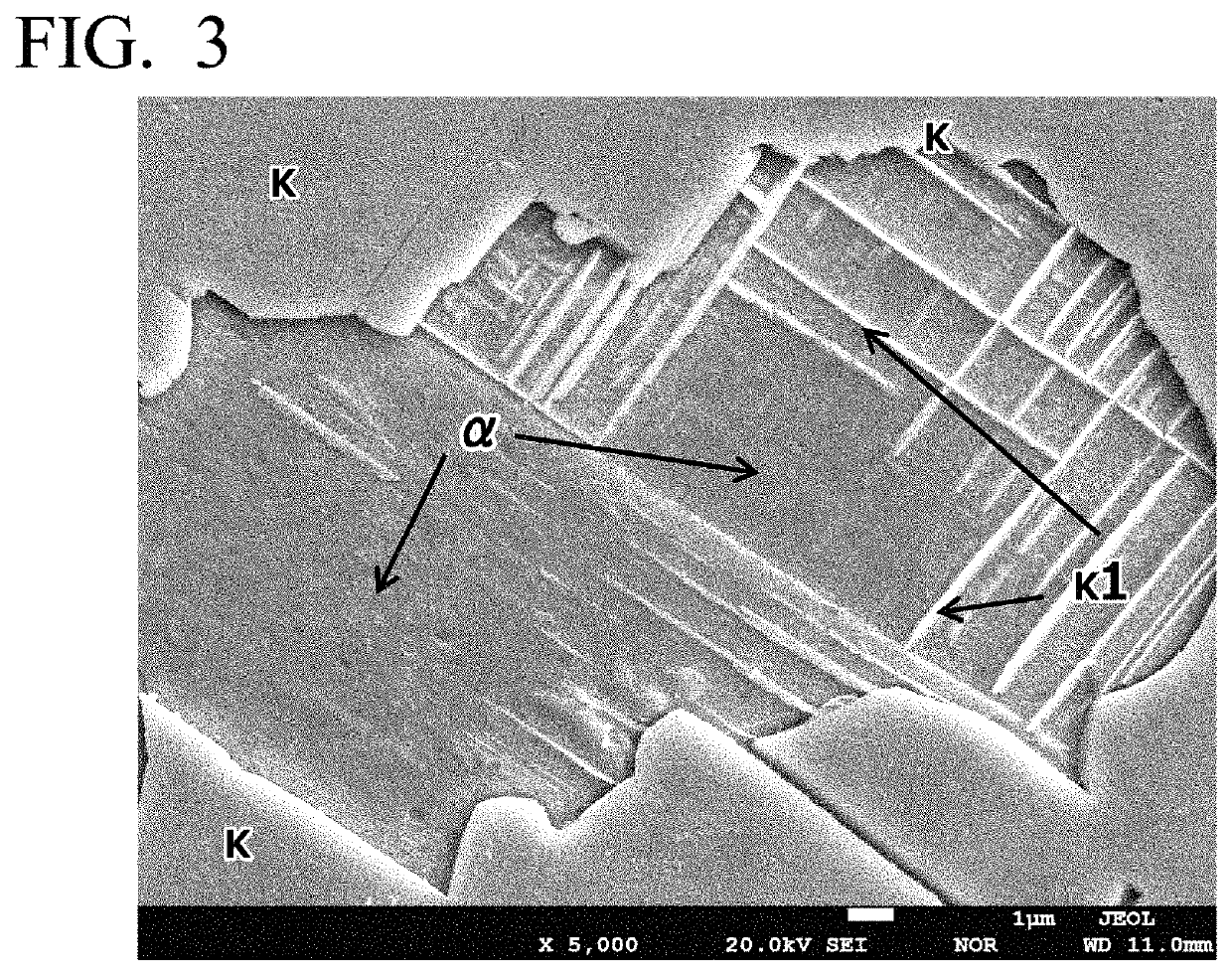High-strength free-cutting copper alloy and method for producing high-strength free-cutting copper alloy
a high-strength, free-cutting technology, applied in the field of high-strength free-cutting copper alloys, can solve the problems of bi being harmful to the human body, 1 has a problem in corrosion resistance, and pb is replaced by pb, so as to improve machinability and improve function, the effect of poor corrosion resistance, and poor impact resistan
- Summary
- Abstract
- Description
- Claims
- Application Information
AI Technical Summary
Benefits of technology
Problems solved by technology
Method used
Image
Examples
example 1
[0280]Using a low-frequency melting furnace and a semi-continuous casting machine on the actual production line, a trial manufacture test of copper alloy was performed. Table 2 shows alloy compositions. Since the equipment used was the one on the actual production line, impurities were also measured in the alloys shown in Table 2. In addition, manufacturing steps were performed under the conditions shown in Tables 5 to 11.
(Steps No. A1 to A14 and AH1 to AH14)
[0281]Using the low-frequency melting furnace and the semi-continuous casting machine on the actual production line, a billet having a diameter of 240 mm was manufactured. As to raw materials, those used for actual production were used. The billet was cut into a length of 700 mm and was heated. Then hot extruded into a round bar shape having a diameter of 25.6 mm, and the rod bar was wound into a coil (extruded material). Next, using the heat keeping effect of the coil and adjustment of a fan, the extruded material was cooled in...
PUM
| Property | Measurement | Unit |
|---|---|---|
| temperature | aaaaa | aaaaa |
| temperature | aaaaa | aaaaa |
| temperature | aaaaa | aaaaa |
Abstract
Description
Claims
Application Information
 Login to View More
Login to View More - R&D
- Intellectual Property
- Life Sciences
- Materials
- Tech Scout
- Unparalleled Data Quality
- Higher Quality Content
- 60% Fewer Hallucinations
Browse by: Latest US Patents, China's latest patents, Technical Efficacy Thesaurus, Application Domain, Technology Topic, Popular Technical Reports.
© 2025 PatSnap. All rights reserved.Legal|Privacy policy|Modern Slavery Act Transparency Statement|Sitemap|About US| Contact US: help@patsnap.com


